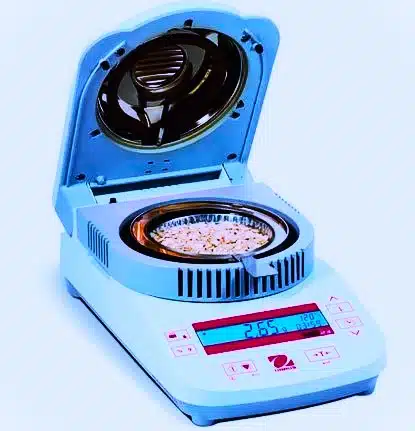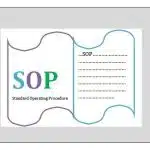Learn the key difference between water and moisture content, including their definitions, measurement methods, and applications in pharmaceuticals industry. Understand how these terms impact material properties and quality control.
Table of Contents

1. Water Content
Definition: Water content specifically refers to the amount of water (H₂O) present in a sample. This measurement excludes other volatile substances. Water content measurement targets only the water present in the sample, excluding other volatiles.
Applications: Measuring water content is essential in industries where the precise amount of water affects product quality, stability, and shelf life, such as in pharmaceuticals, chemicals, and food products.
Analysis Method:
Karl Fischer Titration: A common method used to measure water content accurately. It involves a chemical reaction with iodine and sulfur dioxide in the presence of water.
Gravimetric Analysis: In some cases, the sample can be heated to remove water, and the loss in weight can be attributed to water only if no other volatiles are present.
2. Moisture Content
Definition: Moisture content refers to the total amount of water and any other volatile substances present in a sample. Moisture content can include both water and other volatiles, depending on the context and method used.
Applications: Determination of moisture content is necessary in Pharmaceutical industry where the precise amount of water affects product quality, stability, and shelf life.
Analysis Method: The method for determining moisture content use LOD technique, involving drying and weight measurement, or it can specifically measure by using moisture analyzer.
LOD (Loss on Drying): It is a common analytical technique used to determine the amount of moisture and volatile substances present in a sample by measuring the weight loss upon heating. This method is often used in the pharmaceutical, food, and chemical industries to ensure product quality and stability.
Drying Oven Technique:
The procedure typically involves heating the sample to a specific temperature for a set period and measuring the weight loss.
Analysis Procedure:
i) At first a dry empty crucible is weighed. (W1)
ii) Then a known amount of sample is weighed in that crucible. (W2)
iii) Now calculate the initial sample amount.
Initial sample Weight = (W2 – W1)
iv) Now the sample with crucible is heated at a specified temperature for a specific duration (often in an oven or using an infrared dryer).
v) After drying, the sample is re-weighed.
vi) Now calculate the final sample amount.
Final sample Weight = (W3 – W1)
The LOD is calculated as the percentage of weight loss due to drying.
Calculation:
| LOD (%) | = | (Initial Sample Weight – Final Sample Weight) | X 100 |
| Initial Sample Weight |
Advantages of LOD:
i) Simple and straightforward procedure.
ii) Relatively inexpensive equipment.
iii) Applicable to a wide range of samples.
Limitations of LOD:
i) Not specific to water; other volatile substances can also contribute to weight loss.
ii) Potential sample degradation at high temperatures.
iii) Requires careful control of drying conditions to ensure accuracy.
Moisture Analyzer Technique:
Analysis Procedure:
Sample Preparation: Weigh the sample (2 to 4 g) accurately and place it on the moisture analyzer’s pan. Ensure the sample is spread evenly for consistent heating.
Set Temperature: Select the appropriate drying temperature on the analyzer, typically determined by the material’s properties (e.g., 105°C for general applications).
Initiate Drying Process: Start the drying process by pressing the start button. The analyzer heats the sample to the set temperature.
Monitor Time: Allow the sample to dry for a predetermined time or until the moisture content stabilizes (as indicated by constant weight).
Record Results: Once the drying process is complete, the analyzer displays the final moisture content. Record the moisture percentage and any relevant parameters (temperature, time) for analysis.
Frequently Asked Questions (FAQs)
What is the difference between water content and moisture content?
Water content and moisture content are often used interchangeably, but they can refer to slightly different concepts depending on the context. Generally, water content refers to the amount of water present in a material, expressed as a percentage of the material’s total weight. Moisture content, on the other hand, is a broader term that can include water as well as other liquid components, such as oils or solvents, depending on the material being measured. In many contexts, especially in soil science and food technology, moisture content is specifically used to indicate the amount of water present.
How is water content or moisture content measured?
Water content or moisture content is typically measured using one of several methods, depending on the material being analyzed. Common methods include:
Gravimetric Method: The material is weighed before and after drying, and the loss in weight represents the water or moisture content.
Karl Fischer Titration: A chemical method specifically used to measure water content in samples that cannot be easily dried.
Capacitance or Microwave Sensors: These sensors measure the dielectric properties of a material, which change with moisture content.
The choice of method depends on factors such as the nature of the material, the required accuracy, and the presence of other volatile substances.
Why is it important to know the water content or moisture content of a material?
Knowing the water or moisture content of a material is crucial for several reasons:
Quality Control: In industries such as food, pharmaceuticals, and construction, maintaining the correct moisture content ensures product quality, safety, and shelf life.
Processing and Storage: Proper moisture levels are essential to optimize processing conditions and prevent issues like microbial growth, spoilage, or degradation.
Material Properties: In materials like soil, concrete, and wood, water content affects mechanical properties, strength, and durability, making it important for construction and agricultural applications.

Abdus Sobhan Salim is professional experienced pharmacist in pharmaceuticals, author and founder of pharmabossbd.com, the first Bangladeshi pharmaceutical blogger since 2019.



